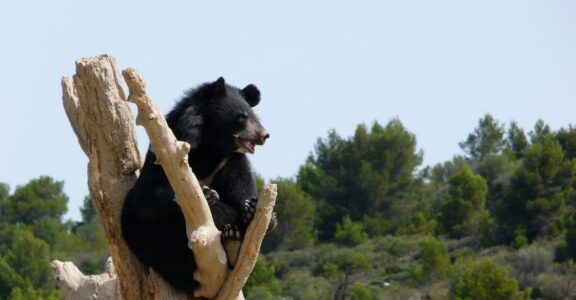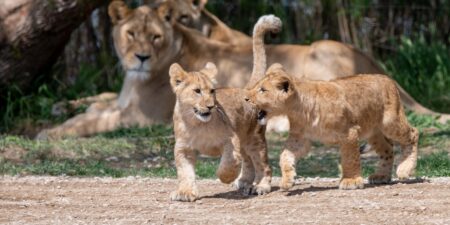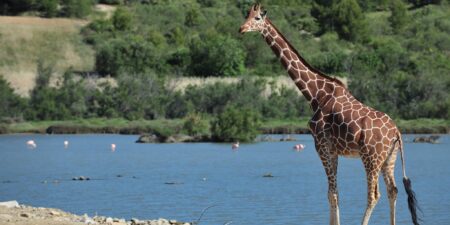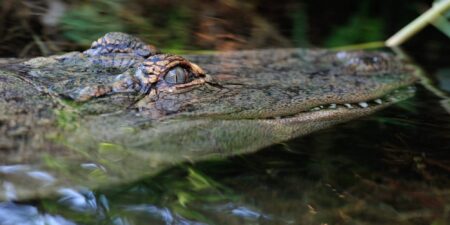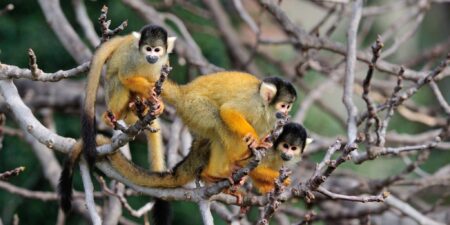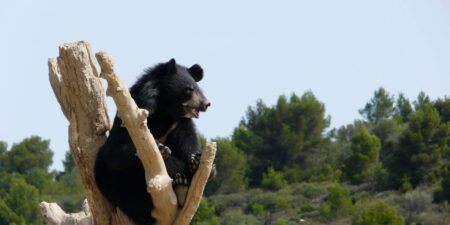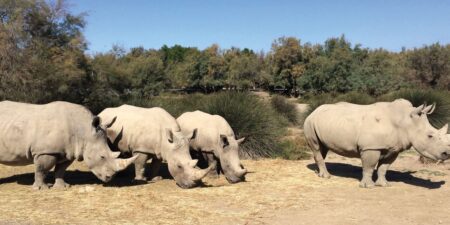Preserving a genetic heritage
Wildlife is experiencing an unprecedented crisis at the start of the 21st century. Some species that were still abundant 20 or 30 years ago (giraffe, lion, African wild dog, Gabon grey parrot…) or that were thought to have been saved by 20th century conservation efforts (white rhinoceros, cheetah…) have recently had the sad privilege of having their great precariousness made official by the IUCN (International Union for Conservation of Nature), at its last congress in September 2016.
For a variety of reasons, the most pessimistic scenarios are becoming reality, and many species seem doomed to disappear in the coming decades. The African continent is particularly at risk because poaching is widespread, civil wars are permanent and millions of hectares of savannahs, wetlands and forests are being converted to farmland.
This gloomy picture highlights the responsibility that animal parks bear today. For some species that have disappeared from their natural habitat, wildlife parks are the only hope of one day returning to the environment they should never have left. Ensuring the sustainability of captive wild animal populations has therefore become essential.
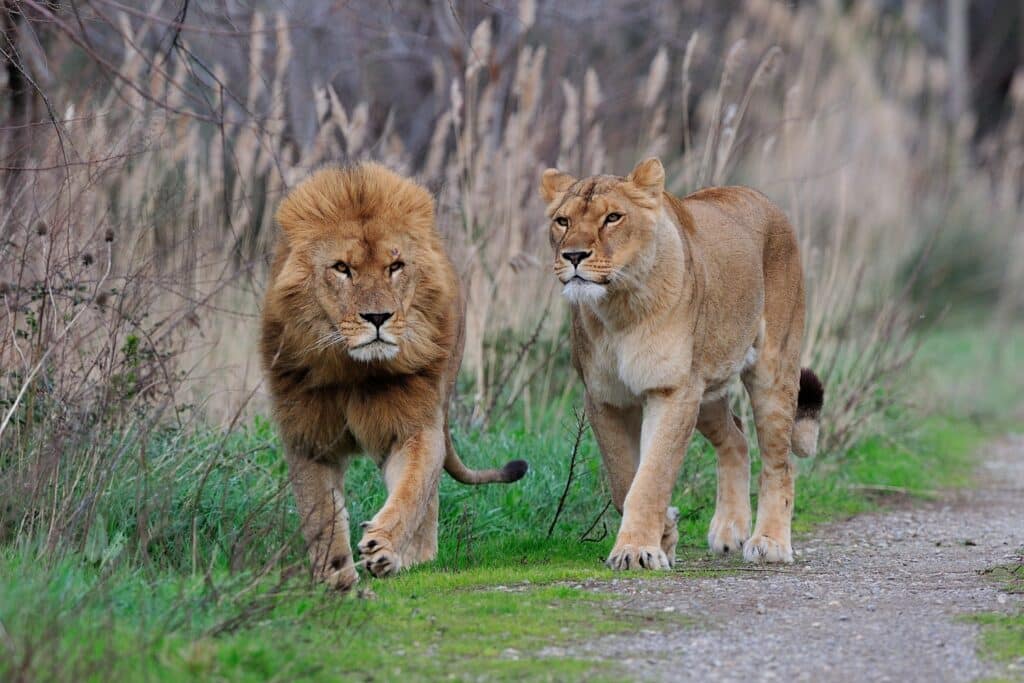
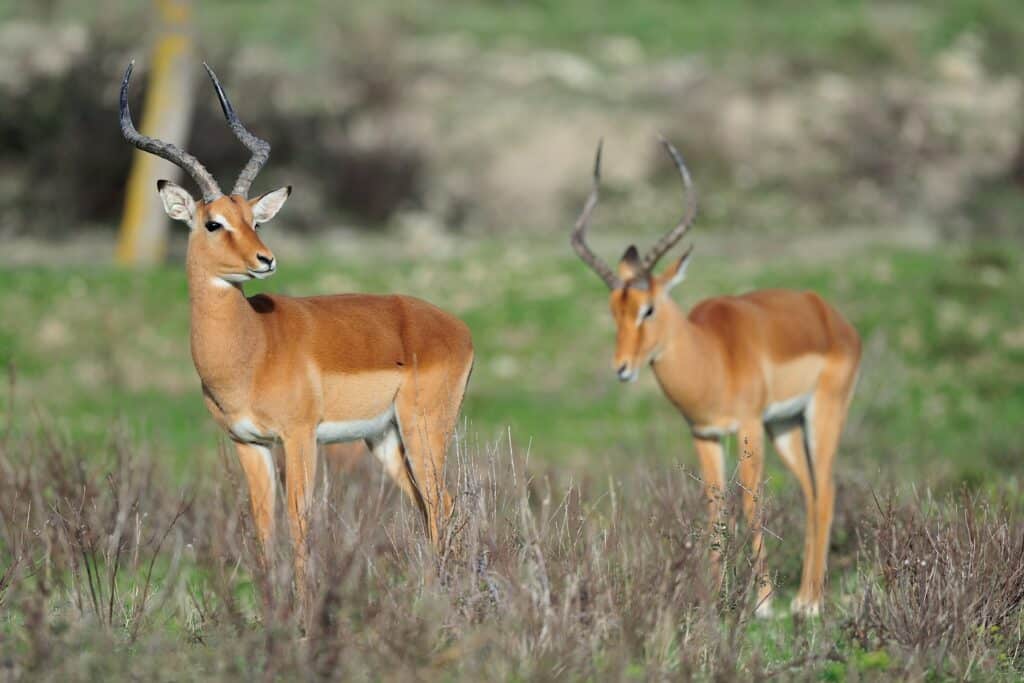
Since the 80s and 90s, the world’s major animal parks have been working together to avoid the pitfalls of inbreeding and to decide which species should be bred first.
The parks that are most sensitive to this conservation action have formed associations (EAZA for Europe, AZA for North America, etc.), and each of these associations has organized itself to define the countless actions to be carried out by its members to ensure that the captive wild animal population as a whole can be maintained in the long term, without the need to include new specimens from the wild. To this end, they have appointed a coordinator for each of the species benefiting from the highest level of management: Breeding Programs (EEP) and Studbooks (ESB). This coordinator has all the genealogical information for the species he/she is responsible for, and once a year he/she gives breeding instructions for the coming year to the various members throughout Europe.
This sometimes means having to part with a precious animal because a genetically compatible partner lives several thousand kilometers away. To remain members of the EAZA, animal parks must abide by these recommendations and never give a market value to the animals they dispose of. All this is done in the interest of the species and without any financial compensation.
The Réserve Africaine de Sigean participates in the following 47 breeding programs:
Mammals
| Species | IUCN status | Coordinator |
| Magot, Macaca sylvanus | EN – Endangered (2016) | Tjerk ter Meulen (Gaia Zoo, Netherlands) |
| White-handed gibbon, Hylobates lar | EN – Endangered (2015) | Job Stumpel (Emmen, Netherlands) |
| Chimpanzee, Pan troglodytes | EN – Endangered (2016) | Frands Carlsen (Copenhagen Zoo, Denmark) |
| Callithrix geoffroyi, Geoffroy’s marmoset | LC – Least Concern (2015) | Agustin Lopez Goya (Madrid Faunia, Spain) |
| Gabonese Talapoin, Miopithecus ogouensis | NT – Near Threatened (2017) | Jesús Recuero (Bioparc Fuengirola, Spain) |
| Bolivian Saimiri, Saimiri boliviensis | LC – Least Concern (2020) | Adrian Baumeyer (Zoo Basel, Switzerland) |
| Wild Dog, Lycaon pictus | EN – Endangered (2012) | Richard Barnes (Port Lympne, United Kingdom) |
| Collared bear, Ursus thibetanus | VU – Vulnerable (2016) | Anna Jakucinska (Warszawa Zoo, Poland) |
| Cheetah, Acinonyx j.jubatus | VU – Vulnerable (2014) | Lars Versteege (Hilvarenbeek, Netherlands) |
| Somali donkey, Equus africanus | CR – Critically Endangered (2016) | Beatrice Steck (Zoo Basel, Switzerland) |
| Grevy’s zebra, Equus grevyi | EN – Endangered (2016) | Tanya Langenhorst (Marwell, UK) |
| Evening primrose, Equus hemionus onager | EN – Endangered (2015) | Stephan Hering (Hamburg, Germany) |
| Mountain zebra, Equus zebra hartmannae | VU – Vulnerable (2017) | Marianne de Jesús (Réserve Africaine de Sigean, France) |
| White rhinoceros, Ceratotherium simum | NT – Near Threatened (2020) | Lars Versteege (Hilvarenbeek, Netherlands) |
| Warthog, Phacochoerus africanus | LC – Least Concern (2016) | Ross Snipp (Flamingo Land, UK) |
| Forest buffalo, Syncerus caffer nanus | NT – Near Threatened (2018) | Merel Zimmermann (Netherlands) |
| Reticulated giraffe and kordofan, Giraffa v. reticulata et antiquorum | VU – Vulnerable (2016) | Jörg Jebram (Opel Zoo, Germany) |
| Blesbok, Damaliscus pygargus phillipsi | LC – Least Concern (2014) | Sam Whitbread (Chessington, UK) |
| Cuvier’s gazelle, Gazella cuvieri | VU – Vulnerable (2016) | Eulalia Moreno (Almeria, Spain) |
| Nyala, Tragelaphus angasii | LC – Least Concern (2016) | Susana Nolasco (Lisboa Zoo, Portugal) |
| Speke’s Sitatunga, Tragelaphus s. free | LC – Least Concern (2016) | Peter Zwanger (Koln, Germany) |
| Greater Kudu, Tragelaphus strepsiceros | LC – Least Concern (2016) | Nadja Niemann (Gelsenkirchen, Germany) |
| Roan antelope, Hippotragus equinus | LC – Least Concern (2016) | Klaus Brunsing (Hannover, Germany) |
| Black hippotrague, Hippotragus n. niger | LC – Least Concern (2016) | Kim Skalborg Simonsen (Givsuk, Denmark) |
| Nile cobbler, Kobus megaceros | EN – Endangered (2016) | Yitzhak Yadid (Bioparco di Roma, Italy) |
| Aoudad, Ammotragus lervia sahariensis | VU – Vulnerable (2020) | Dennis Muller (Zoologischer Garten Halle Bergzoo, Germany) |
| African lion, Panthera leo | VU – Vulnerable (2014) | Kim Skalborg Simonsen (Gibskud Zoo, Denmark) |
| Lechwe, Kobus leche | NT – Near Threatened (2016) | John MCLaughlin (Fota Wildlife Park, Ireland) |
| Impala, Aepyceros melampus | LC – Least Concern (2008) | Sebastian Weber (Zoo Zürich, Switzerland) |
| Red river hog, Potamochoerus porcus | LC – Least Concern (1996) | Will Walker (Wild Place, UK) |
| Meerkat, Suricata suricatta | LC – Least Concern (1996) | Jessie Boylan (Paradise Wildlife Park, UK) |
Birds
| Species | IUCN status | Coordinator |
| Red-necked ostrich, Struthio c.camelus | LC – Least Concern (2018) | Maren Frerking (Zoo Hannover, Germany) |
| Goliath heron, Ardea goliath | LC – Least Concern (2016) | Stephanie Jessen (AquaZoo Leeuwarden, Netherlands) |
| Ombrette, Scopus umbretta | LC – Least Concern (2016) | Ross Snipp (Flamingo Land, UK) |
| Tantalus ibis, Mycteria ibis | LC – Least Concern (2016) | Roman Horsky (Zoo Zlin, Czech Republic) |
| Abdim’s stork, Ciconia abdimii | LC – Least Concern (2016) | Zuzana Matyasova (London Zoo, United Kingdom) |
| African Marabou, Leptopilos crumeniferus | LC – Least Concern (2016) | Cathy King (Walsrode, Netherlands) |
| Bald Ibis, Geronticus eremita | RE – Regionally extinct (2020) | Christiane Boehm (Alpenzoo, Austria) |
| Pink-backed pelican, Pelecanus rufescens | LC – Least Concern (2016) | Georgina Barnes (Longleat Safari Park, United Kingdom) |
| African Jabiru, Ephippiorhynchus senegalensis | LC – Least Concern (2016) | Matthias Hendel (Zoo Dresden, Germany) |
| Rüppell’s vulture, Gyps rueppelli | CR – Critically Endangered (2021) | Maarten Vis (Rotterdam Zoo, Netherlands) |
| Crowned crane, Balearica pavonina | VU – Vulnerable (2016) | Mike Woolham (Banham Zoo, United Kingdom) |
| Purple touraco, Musophaga violacea | LC – Least Concern (2016) | Uljana Kalazny (Warsaw Zoological Garden, Poland) |
| Touraco pauline, Tauraco erythrolophus | LC – Least Concern (2016) | Louise Peat (Burford, United Kingdom) |
| White-headed duck, Oxyura leucocephalaus | EN – Endangered (2017) | Heiko Janatzek (Zoom Erlebniswelt Gelsenkirchen, Alemanya) |
Reptiles
| Species | IUCN status | Coordinator |
| Dwarf crocodile, Osteolamus tetraspis | VU – Vulnerable (1996) | Fabian Schmidt (Leipzig Zoo, Germany) |
| West African false gharial, Mecistops cataphractus | CR – Critically Endangered (2013) | François Huyghe (Biotropica, France) |
